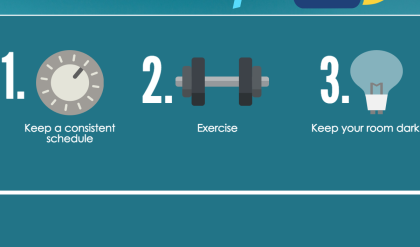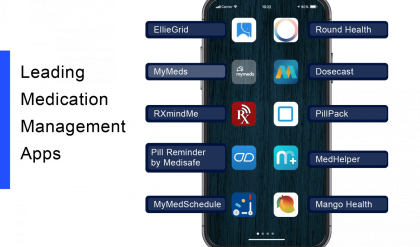
Mastering Your Medical Appointments: A Practical Guide
Navigating the healthcare system can feel like traversing a labyrinth. From scheduling appointments to understanding your bills, the process can be overwhelming. This comprehensive guide empowers you to become the master of your medical journey, ensuring you receive the best possible care efficiently and effectively.
Before the Appointment: Laying the Groundwork
Preparation is key. Think of your medical appointment as a crucial meeting—you wouldn’t go unprepared for a job interview, would you? The same principle applies here.
1. Choose the Right Provider:
Research is paramount. Don’t settle for the first name on a list. Consider:
- Specialization: Does the doctor specialize in your specific health concern?
- Reviews: Check online reviews and ratings to gauge patient experiences.
- Insurance Coverage: Confirm that your insurance covers the provider and the services you need.
- Location and Accessibility: Factor in convenience, parking, and accessibility features if necessary.
2. Compile Your Medical History:
Gather all relevant information beforehand. This includes:
- Previous medical records: Bring copies of relevant test results, scans, and doctor’s notes.
- Medication list: Include dosage, frequency, and the reason for each medication.
- Allergies: A clear and concise list of allergies (medication, food, environmental).
- Family medical history: Note any significant illnesses or conditions in your family.
3. List Your Questions:
Write down your questions before your appointment. This prevents forgetting important details during the consultation. Prioritize your questions based on urgency.
During the Appointment: Maximizing Your Time
Your appointment time is precious. Make the most of it.
1. Be Punctual: Arriving early allows for necessary paperwork and reduces stress.
2. Communicate Clearly: Clearly articulate your concerns, symptoms, and expectations. Don’t hesitate to use visual aids if helpful.
3. Active Listening: Pay close attention to the doctor’s explanations. Ask for clarification if needed. Don’t be afraid to interrupt to ensure you understand.
4. Take Notes: Jot down key information, such as diagnoses, treatment plans, and follow-up instructions. Consider recording the appointment with the doctor’s permission.
5. Don’t Hesitate to Ask: No question is too small or insignificant. Your doctor is there to help you understand your health.
After the Appointment: Following Up and Maintaining Control
Your involvement doesn’t end with the appointment.
1. Review Your Notes: Go over your notes and ensure you understand the next steps.
2. Schedule Follow-Up Appointments: Book any necessary follow-up appointments promptly.
3. Understand Your Bills: Review your medical bills carefully and address any discrepancies immediately.
4. Track Your Progress: Monitor your symptoms and progress as outlined in your treatment plan. Don’t hesitate to reach out to your doctor if concerns arise.
Table: Essential Questions to Ask Your Doctor
| Question Category | Sample Questions |
|---|---|
| Diagnosis | What is my diagnosis? What are the possible causes? |
| Treatment | What are my treatment options? What are the risks and benefits of each? |
| Medication | What are the side effects of this medication? How long will I need to take it? |
| Lifestyle Changes | What lifestyle changes should I make? |
| Prognosis | What is my long-term outlook? |
Becoming Your Own Advocate
Mastering your medical appointments is about more than just attending them; it’s about taking an active role in your healthcare. By being prepared, communicative, and proactive, you become your own best advocate, ensuring you receive the care you deserve. Remember, your health is your responsibility, and taking charge is the first step towards a healthier future.

Additional Information
Mastering Your Medical Appointments: A Deeper Dive into Effective Healthcare Navigation
While a “Practical Guide” to mastering medical appointments covers the basics – scheduling, preparation, and follow-up – a deeper analysis reveals crucial nuances impacting patient outcomes and healthcare system efficiency. This expanded perspective considers several key areas:
I. Beyond the Appointment: Proactive Healthcare Management:
The guide’s success depends on shifting from a reactive to a proactive approach. This involves understanding personal health risks based on family history, lifestyle, and demographics. For example, individuals with a family history of heart disease should schedule regular checkups including cholesterol and blood pressure screenings, potentially beginning earlier than recommended general guidelines. This proactive approach reduces the likelihood of serious health issues arising unexpectedly and allows for early intervention. Statistics show that early detection significantly improves treatment outcomes and survival rates across many diseases. For instance, early detection of breast cancer through regular mammograms significantly improves five-year survival rates.
II. Effective Communication as a Cornerstone:
The guide should emphasize the crucial role of effective communication with healthcare providers. This involves more than just asking questions; it’s about articulating concerns clearly, providing accurate and complete information (including medications, supplements, and allergies), and actively listening to understand the provider’s recommendations. The use of patient portals and digital tools for pre-appointment communication can enhance this process. A case study could highlight how a patient’s detailed, pre-recorded medical history through a portal saved valuable appointment time and allowed the physician to focus on addressing specific concerns more thoroughly.
III. Navigating the Healthcare System: Beyond the Single Appointment:
Mastering medical appointments extends beyond individual visits. It involves understanding the broader healthcare system – navigating referrals, specialist appointments, diagnostic tests, and hospitalizations. This often requires meticulous record-keeping, proactive follow-up on test results, and a clear understanding of insurance coverage and billing processes. The lack of clarity in these areas contributes to significant patient frustration and delays in treatment. Analyzing patient satisfaction surveys could reveal common pain points related to system navigation and inform strategies for improvement within the guide.
IV. The Role of Shared Decision-Making:
A comprehensive guide must advocate for shared decision-making, empowering patients to actively participate in treatment plans. This requires understanding the risks and benefits of various treatment options, asking informed questions, and expressing preferences. The guide should provide frameworks for patients to engage in these discussions productively, such as utilizing decision aids or creating a list of questions beforehand. Research on patient involvement in treatment plans demonstrates improved adherence and satisfaction.
V. Addressing Health Disparities and Accessibility:
The guide should acknowledge and address potential barriers to accessing quality healthcare, such as language barriers, financial constraints, geographical limitations, and health literacy. It should provide resources and strategies to overcome these challenges, including information about translation services, financial assistance programs, telehealth options, and patient advocacy groups. Statistics on healthcare disparities highlight the urgent need for such inclusive approaches.
VI. The Future of Medical Appointments: Technology and Innovation:
Future iterations of the guide should incorporate the evolving landscape of healthcare technology. This includes telehealth, remote patient monitoring, and AI-powered diagnostic tools. Discussing the potential benefits and limitations of these technologies, along with practical tips for their effective utilization, will enhance the guide’s long-term relevance.
By expanding the scope of the “Mastering Your Medical Appointments” guide to incorporate these deeper aspects of healthcare navigation, it evolves from a simple how-to manual to a valuable resource that empowers patients to actively manage their health and achieve better outcomes. The addition of relevant data, case studies, and practical strategies will significantly increase its impact and value.






